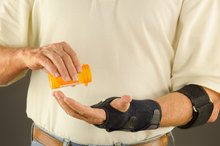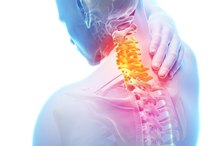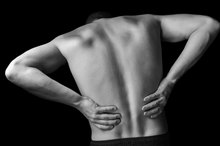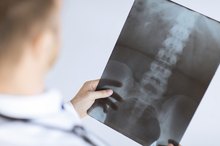Unconventional Treatments for Hip Bursitis
Bursitis in the hip (trochanteric bursitis) is a painful condition most commonly seen in middle age or later. The trochanteric bursa is a fluid-filled cavity that sits above the prominent bone on the side of the hip. According to the Mayo Clinic, hip bursitis can be caused by arthritis, overuse or repetitive motion of the hip, direct trauma or injury, gout, or infections 13. Prolonged kneeling, standing or sitting can also trigger bursitis, as can altering one’s walking motion due to other pain. Sometimes the condition appears without apparent cause. Conventional treatment typically includes rest and immobilization, applying a cold pack to reduce swelling, and non-steroidal anti-inflammatory drugs (NSAIDs). In some cases physical therapy, antibiotics in the case of a causal infection, or a corticosteroid injection is recommended. Here are some less conventional approaches to curing hip bursitis, intended as individual suggestions rather than sequential steps.
If you are experiencing serious medical symptoms, seek emergency treatment immediately.
Use herbal treatment to reduce inflammation. Suggested herbals, to be taken one at a time rather than simultaneously, include: turmeric for 12 weeks (375mg three times per day); boswellia (150mg three times per day); evening primrose oil (1200mg per day, not to be taken by patients taking blood-thinning medications); or white willow tea (2 grams in 8oz water, up to 5 cups per day, not to be taken by anyone under 18 or by patients taking blood-thinning medications or aspirin).
How to Treat a Pulled Tendon
Learn More
Take nutritional supplements. The University of Maryland Medical Center suggests glucosamine sulfate (500mg 2-3 times per day) to reduce pain and inflammation; omega-3 fatty acids such as fish oil or flaxseed oil for reducing inflammation; Vitamin C with flavonoids to repair cartilage; or bromelain (250mg twice per day, not to be taken by patients taking blood-thinning medications or those with peptic ulcers) as an anti-inflammatory.
Consult a massage therapist about myofascial release therapy, which aims to loosen or release tightness in the fascia by applying sustained pressure. The Mayo Clinic reports that the medical profession has not accepted this technique, but that some people seem to be helped by it.
How to Use a Patellar Tendonitis Strap
Learn More
Visit a chiropractor. The Medical Center at the University of Maryland cites chiropractic treatments that include joint and spine manipulation, as well as ultrasound therapy or ice massage.
Try movement therapies such as tai chi, yoga or pilates. Gentle, supervised activity in these disciplines can help to strengthen muscles and ligaments while reducing tension.
Visit an acupuncturist. According to the Pacific Wellness Institute, acupuncture treatment focuses on “reducing excessive tightness and spasm of the muscles attached to the greater trochanter (the palpable protrusion at the top of the femur)” to reduce stress on the hip tendons. Specific treatments can include dynamic joint movement called “dynapuncture,” application of ice, moxibustion heat therapy, and stress management.
Tips
Self-diagnosis of hip bursitis is discouraged. A physician’s diagnosis is a prerequisite since hip pain can be caused by many different conditions. The Pacific Wellness Institute stresses that acupuncture may be insufficient in cases involving “joint deformity or severe degeneration due to dysplasia, osteoarthritis or rheumatoid arthritis,” bone spurs, calcium deposits, or signs of infection. In these cases, traditional medical consultation is suggested.
Warnings
Herbs (particularly white willow) can have serious side effects or interactions. Any decision to take herbs for bursitis should be taken in consultation with a medical professional. According to the University of Maryland Medical Center, massage is not recommended if hip bursitis has been contracted as the result of an infection.
Related Articles
References
- Causes of Bursitis (Mayo Clinic)
- Lifestyle and Home Remedies (Mayo Clinic)
- Bursitis Treatments and Drugs (Mayo Clinic)
- Cleveland Clinic. Bursitis. Updated January 30, 2019.
- Arthritis Foundation. Bursitis.
- Truong J, Ashurst JV. Septic bursitis. NCBI StatPearls. 2019.
- Conduah AH, Baker CL, Baker CL. Clinical management of scapulothoracic bursitis and the snapping scapula. Sports Health. 2010;2(2):147-55. doi:10.1177/1941738109338359
- Stanford Health Care. Treatment for bursitis.
- Cleveland Clinic. Bursa injection.
- Mitchell JJ, Chahla J, Vap AR, et al. Endoscopic trochanteric bursectomy and iliotibial band release for persistent trochanteric bursitis. Arthrosc Tech. 2016;5(5):e1185-e1189. doi:10.1016/j.eats.2016.07.005
- University of Rochester Medical Center. Bursitis.
- Aaron, D.; Patel, A.; Karyiaros, S. et al. Four Common Types of Bursitis: Diagnosis and Management.J Am Acad Orthop Surg June 2011;19:359-367.
- Blackwell, J.; Hay, B.; Bolt, A. et al. Olecranon bursitis: a systematic overview.Shoulder Elbow. 2014;6(3):182-90. DOI: 10.1177/1758573214532787.
- Manac'h, A.; Ha, A.; Descatha, E. et al. Prevalence of knee bursitis in the workforce. Occupational Medicine. 2012;62(8):658-60. DOI: 10.1093/occmed/kqs113.
Resources
Writer Bio
David B. Ryan has been a professional writer since 1989. His work includes various books, articles for "The Plain Dealer" in Cleveland and essays for Oxford University Press. Ryan holds degrees from the University of Cincinnati and Indiana University and certifications in emergency management and health disaster response.







